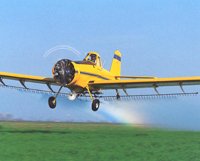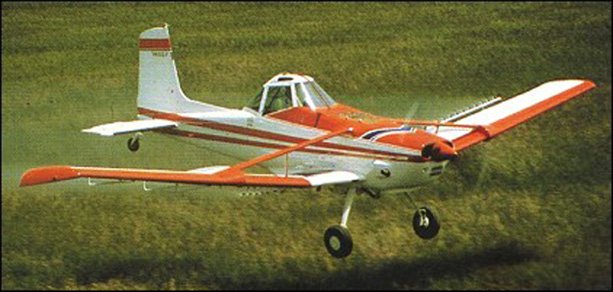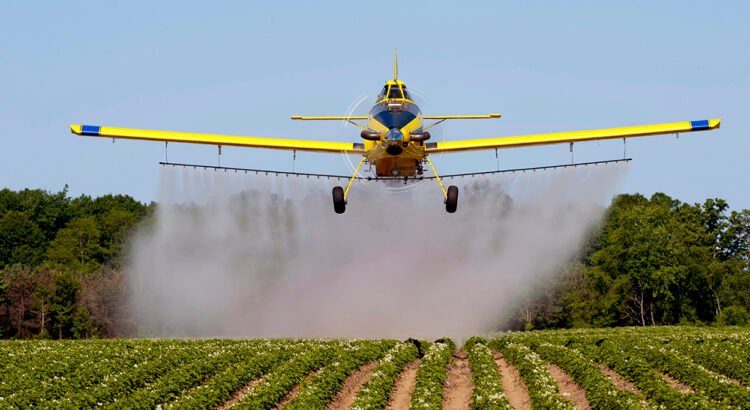As the United States agriculture industry enters the upcoming growing season, the National Agricultural Aviation Association (NAAA) asks all uncrewed aircraft system (UAS) operators (or drones) to be mindful of low-altitude crewed (or manned) agricultural aircraft operations. Agricultural aviators treat 127 million acres of cropland in the U.S. each year in addition to millions of acres of pastureland, rangeland and forestry that help farmers increase productivity and protect their crops.
“With the increasing number of uncrewed aircraft operations over the last few years, their operators must be aware of low-flying, manned agricultural aircraft,” said Andrew Moore, chief executive officer of NAAA. “It is extremely difficult, if not impossible, for manned aircraft to see a drone while conducting aerial applications 10 feet off the ground at speeds of up to 140 mph. UAS are not allowed above 400 feet without a waiver from the Federal Aviation Administration (FAA), meaning they share the low-altitude airspace with ag aircraft. We encourage professional and hobbyist UAS operators to keep this in mind, equip UAS with detect and avoid technology and give right-of-way to manned or crewed ag aircraft to ensure a safe 2025 growing season.”

In a survey conducted by NAAA near the end of the 2024 agricultural aviation season, 16% of manned aerial application operators reported encountering a drone while operating an ag aircraft last year, this is compared to 11% in 2023.
NAAA urges drone operators to do everything possible to avoid manned ag aircraft conducting important low-altitude work, including the following recommendations:
- Give the right of way to a manned aircraft. It’s the law.
- When you return to a field to fly a UAS, ensure that there are no manned aircraft working in the field. Fields should be scouted each time your pilot returns to the field, not only at the beginning of the application.
- Equip drones with visible strobe lights, highly visible markings and tracking technology, like an ADS-B In system.
- Monitor aviation radio frequency 122.925 MHz for crewed agricultural aircraft. To transmit, consider a radio station license by submitting FCC Form 605.
- Be certified and well-trained in operating an uncrewed aircraft.
- Contact local agricultural aviation operations before flying by consulting the Find An Aerial Applicator database at AgAviation.org.
- Land your uncrewed aircraft immediately when a low-flying aircraft is nearby.
- Carry uncrewed aircraft liability insurance.
To assist with avoiding collisions between manned ag aircraft and UAS, NAAA has recommended that manned ag aviators should circle the application site before entering it to ensure UAS operators have time to spot the manned aircraft and land their UAS. The FAA also reminds UAS users to keep safety in mind during their annual Drone Safety Day on Saturday, April 26.
Research has proven that small UAS can be virtually invisible—and potentially lethal—to agricultural aviators, air ambulance helicopters, law enforcement and other low-flying manned aircraft operating in the same airspace. For example, in January, a civilian drone collided with a CL-415 firefighting aircraft fighting the Palisades Fire in California, resulting in the specially designed firefighting plane sustaining wing damage and grounding the aircraft.

In addition, when birds hit an ag aircraft, they can break through its windshield, causing deadly accidents. A study conducted by the Alliance for System Safety of UAS through Research Excellence (ASSURE) showed UAS collisions with aircraft cause more damage than a bird strike of comparable size would, due partially to uncrewed aircraft’s dense motors and batteries, as opposed to a bird made mostly of water, feathers, hollow bones and sinew.
The public depends on the continued safe, affordable and abundant supply of food, fiber and bioenergy, and America’s agricultural aviators are busy working in the skies to help farmers produce their crops. Ag aircraft also fly at low altitudes to combat wildfires and make applications to eradicate mosquitoes and other deadly pests. If you’re going to fly a UAS, please be responsible and do everything possible to avoid crewed/manned agricultural aircraft. Learn more at AgAviation.org/uavsafetycampaign and Knowbeforeyoufly.org.



